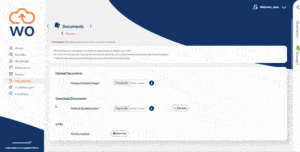‘Furloughing’ is a relatively new word for most HR and recruitment teams.
But it’s one that has quickly become commonplace as a result of the changes all organisations have had to make during the pandemic.
Here’s a look at exactly what furloughing means, how it works and the role onboarding plays in the effective management of the process.
What is furloughing?
Furlough means to temporarily lay off or suspend a worker who remains employed. A more commonly used term for this is to put somebody on ‘gardening leave’.
On April 20th, the UK Government launched a grant to support employers who are furloughing employers as a result of the health pandemic.
Businesses can claim up to £2,500 a month towards staff wages. More than four million workers have since been furloughed under the scheme.
The aim is to help prevent redundancies and to avoid the collapse of businesses as a result of the restrictions placed on organisations during the crisis.
How does the furlough scheme work?
The scheme requires the employer to apply for a grant with the government able to pay up to 80% of a furloughed person’s wages – up to a maximum of £2,500. Anyone working in a full-time role, or via PAYE, on March 19th can be furloughed.
A condition of the grant is that no work is done for the employer during the period the employee is furloughed. The minimum time that a worker can be furloughed is three weeks.
How do you manage the furlough process?
For hiring teams, managing the furlough process poses some difficult challenges. For most organisations, this will be something they have never previously had to do, at least not on such as a large scale.
For employees, it means having to deal with all the anxiety and stress that can be caused by uncertainty and disruption to their regular working routines. To deal with these problems requires many of the strategies typically used for employee onboarding.
How onboarding can help?
From an HR perspective, the furlough process can be considered as ‘re-onboarding’. It’s managing communications and administrative processes for workers who need to be reintroduced back into the workplace.
Here are some onboarding tips to help handle the furlough process:
Communication is key
In the same way that starting a new job can be an anxiety-inducing time, so can rejoining a company. Furloughed employees must be kept ‘in the loop’ with as much information as possible about what’s happening.
As well as official communications, creating spaces where furloughed employees can chat more informally with colleagues can help reduce stress. Business orientated social media platforms such as Slack allow chat rooms and groups to be easily created.
Think about the experience
Onboarding places a lot of focus on the experience a starter has as they join an organisation. This same approach needs to be taken with workers who are rejoining after a furlough period has ended.
Simple things can make a big difference – an email to thank employees for their patience, activities to welcome workers back, proving ‘catch up time’ etc. Without this approach, there’s the risk of employees returning demotivated and demoralised.
Update your documentation
Furloughed workers will likely be returning to slightly different roles and workplaces than when they left. The health pandemic means many organisations will have had to make changes, such as a move to more flexible and remote forms of work.
Any of these changes need to be properly documented with updated policies and guides shared with furloughed employees as they return to work. For compliance purposes, this should be completed before they restart in their role.
Digital onboarding and furlough
Webonboarding is a cloud-based solution that provides a remote-friendly way to handle the employee onboarding or re-onboarding process.




